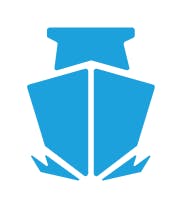Vessel Stability measures the ship’s uprightness or how it remains at water level. Now, in a broad sense, this uprightness can be conceived from two perspectives, and ship stability can be described in two ways: i) longitudinal and ii) Transverse stability.Longitudinal stability is the measure of a vessel’s uprightness’ when we describe it from a lateral or sideways sense. That is, looking at the vessel’s length from any side. Here uprightness is defined as the vessel’s state of remaining level or even with the waterline throughout its length or span.
Now consider a situation when this state is lost, the vessel inclines towards the fore or aft by bow or stern respectively, and the even waterline changes. This is known as the ship’s trim. In other words, when the draft or water level is different or variable throughout the vessel’s length, the vessel is said to be trimmed. When the draft or water level is higher at the bow or forward as compared to the stern or aft, the vessel is said to have a trim by bow or trim by forward. Conversely, when the draft is higher at the stern or the aft of the vessel compared to the bow end, the vessel is said to have a trim by aft or trim by stern. The causes for this disparity in the drafts in a longitudinal sense of a vessel can be various factors more or less similar to the ones in the case of transverse stability, i.e., external like weather or sea conditions or internal like loading or weight shifts.
In simpler words, trim can be defined as the difference in the draught between the bow and the stern.More specifically on the ship Doggerbanke we can see that in some situations when the ship is at maximum speed we see the ship having a forward call i. e. trim by head (see the photos below).In real life conditions this can happen when the ship enters an area where the water density changes to fresh water , due to poor loading, due to cargo shifting etc. In nautis home should this happen? Is it a feature that affects buoyancy and needs improvement? What do you think? I look forward to your comments.
For more information go here :




